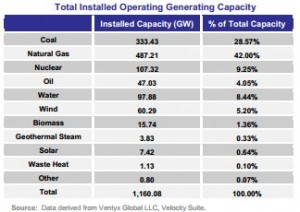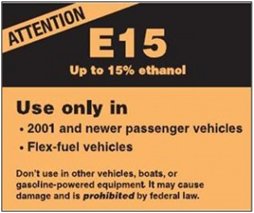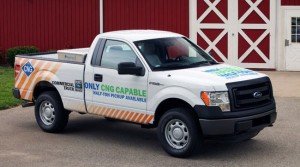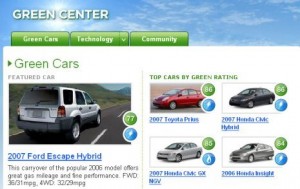 Electrified transportation has major challenges to overcome with one of them being where the electricity comes from. Your car could be zero emission, but if the energy source used to generate the electricity powering your motor is spewing carbon, then what’s the point? Or so the thinking goes. One bright spot is that new power plant capacity is seeing big growth in renewable energy and natural gas, and steep decline in coal-fired plants. A new report from the Federal Energy Regulatory Commission’s Office of Energy Projects says that renewables (such as solar, wind, biomass, geothermal, and hydropower) made up 37.16% of new domestic electrical generating capacity during 2013 for a total of 5,279 milliwatts (MW). Natural gas led 2013 with 7,270 MW of new capacity (51.17%). Renewable energy made up for three times that of coal (1,543 MW or 10.6%); oil (38 MW – 0.27%); and nuclear power (0 MW – 0.00%) combined.
Electrified transportation has major challenges to overcome with one of them being where the electricity comes from. Your car could be zero emission, but if the energy source used to generate the electricity powering your motor is spewing carbon, then what’s the point? Or so the thinking goes. One bright spot is that new power plant capacity is seeing big growth in renewable energy and natural gas, and steep decline in coal-fired plants. A new report from the Federal Energy Regulatory Commission’s Office of Energy Projects says that renewables (such as solar, wind, biomass, geothermal, and hydropower) made up 37.16% of new domestic electrical generating capacity during 2013 for a total of 5,279 milliwatts (MW). Natural gas led 2013 with 7,270 MW of new capacity (51.17%). Renewable energy made up for three times that of coal (1,543 MW or 10.6%); oil (38 MW – 0.27%); and nuclear power (0 MW – 0.00%) combined.
Electricity production accounts for about 33% of greenhouse gas emissions in the US, according to US Environmental Protection Agency. Natural gas is a fossil fuel, just like coal, but it’s a much cleaner source of power – the EPA says its produces less nitrogen oxides and carbon dioxide than coal, and half as much carbon dioxide, less than a third as much nitrogen oxides, and only one percent as much sulfur oxides at the power plant. As you can see in the Federal Energy Regulatory Commission chart above, coal still makes up for a large share of US power plant operations at 28.57% last year. It used to be right above 50%; natural gas has been taking some of that share away for the past two years. Water and wind make up the biggest part of the renewable category; solar gets a lot of attention but is still in an early stage of development – but if you look at the new roll outs last year, solar is looking better. Solar led the way with 266 new units totaling 2,936 MW, followed by wind with 18 units producing 1,129 MW. Biomass provided 97 new units totaling 777 MW; water had 19 new units and 378 MW; and geothermal steam had four new units and 59 MW.
And in other clean transportation news:
- Along with the new fuel economy standard, the US Environmental Protection Agency began working more closely and cooperatively with automakers in 2011 on tailpipe smog emission standards. At the Detroit Auto Show, EPA Administrator Gina McCarthy told automakers that the agency will take final action on its “Tier 3” standards next month; it’s putting stricter limits on tailpipe emissions and will have a mandate for oil companies limiting the amount of sulfur that can be used in gasoline. The rule will cost less than a penny a gallon and bring improved health protections to the public, McCarthy said to Automotive News. Automakers are pleased with the prospect of making and selling the same vehicles globally with better emission controls, as long as the oil industry does its part. The negotiations in 2011 appear to have been the start of ongoing cooperation between government and the auto industry. Technology is now in a place to provide solutions to barriers that used to be insurmountable.
- Tesla Motors CEO Elon Musk thinks leasing is the answer for electric vehicle acquisitions, and just about all other types of vehicles out on the roads. Tesla guarantees the future value of its cars during the lease, allowing it to bring down monthly payments for the luxury, sporty sedan, the Model S. The premise of the guaranteed residual value has been based on the Mercedes Benz S Class as the benchmark – Tesla promises the Model S won’t depreciate any lower than the S Class; and Tesla will buy back the car at the agreed price. It will be very interesting how Tesla and its finance department do in the future; automakers get a lot of flexibility in how they report profit and loss from leasing within their captive finance divisions; some would call it “creative finance.” The Model S will cost much more in China – about $121,000. There’s bound to be very competitive lease deals in that country, which Tesla is counting on for pushing forward in its unit sales.
- The 2015 Cadillac ELR took the Green Car Technology of the Year award. That extended range plug-in hybrid luxury car just rolled out last month and has only sold a handful of units. Winning the award should help, just like cars have done winning Green Car Journal’s sister award, the Green Car of the Year award, which is given out in November at the LA Auto Show. Ron Cogan and the other award judges were particularly impressed with the ELR’s paddle shifters used to increase the amount of energy it’s able to regenerate and store in its battery pack. That helps increase its range.
- More students are being called on for breakthroughs in green vehicle technologies. Not long after Ford showed off its Fusion Hybrid automated research vehicle, Ford announced two alliances with impressive universities. Ford has projects started with Massachusetts Institute of Technology and Stanford University to research and develop solutions to some of the challenges that come up with automated driving. The teams will explore Ford’s Blueprint for Mobility, where driverless, automated driving is expected to bring long-term social contributions.
- Going green is becoming more appealing to auto dealers around the country as a marketing message and as a strategy to build employee and customer loyalty – something to be proud of contribute to the local and global community. Rossi Honda of Vineland, NJ, says it’s the first-ever US dealer to become “Electric-Grid Neutral” and that happens through using no net electricity from its local utility. Rossi Honda installed solar panels during 2012 that took care of 90% of its need for electricity; the other 10% and its neutrality rating came from replacing metal halide lamps with LED lamps. Installing canopies outside for weather protection was also part of it neutral program.
- Via Motors has made an $80 million purchase agreement with Sun Country Highway, a Canadian company that’s bringing electric vehicle charging stations to the nation’s highways. The deal will bring 1,000 of Via’s extended range plug-in hybrid Vtrux vans as shuttle vehicles for the Best Western hotel chain.
- The Smart ForTwo Electric Drive was named the most environmentally friendly vehicle on American roads, according to the 2014 Greenest Vehicles list released by the American Council for an Energy-Efficient Economy; an assortment of battery-electric vehicles, plug-ins, hybrids – and one natural gas model – rounding out the Top 10. Toyota and Honda overwhelming dominated the ACEEE list of “Greenest” models.







